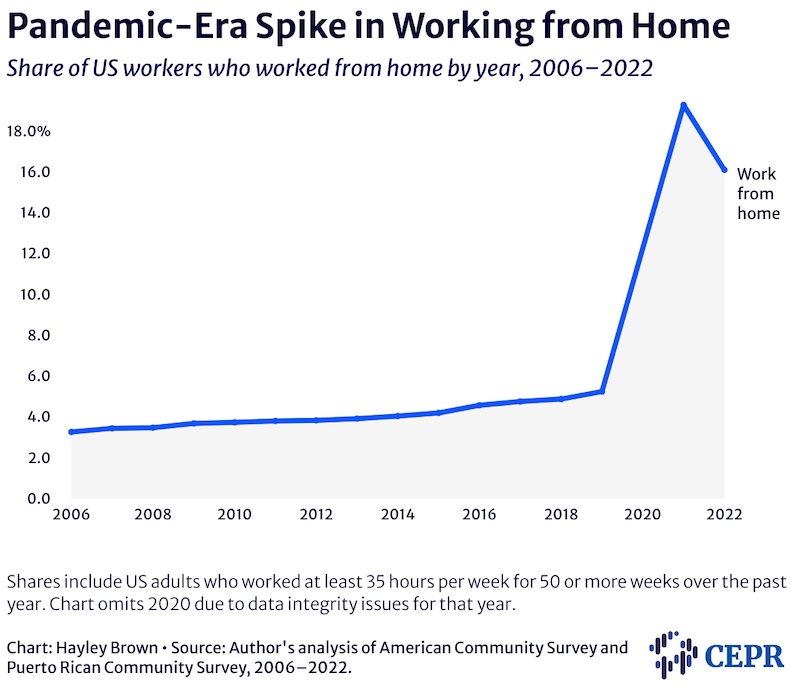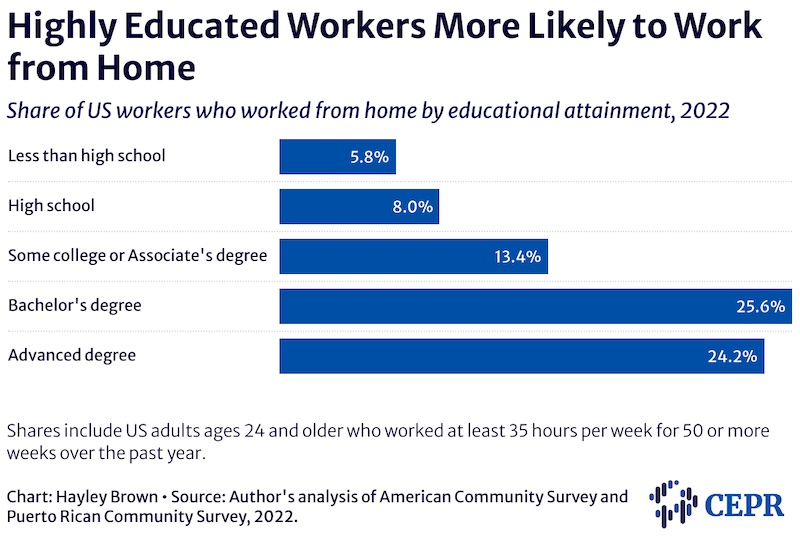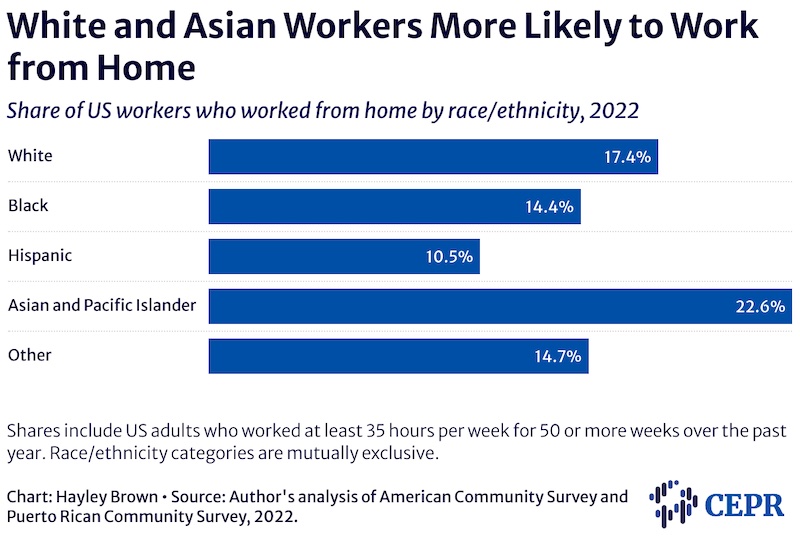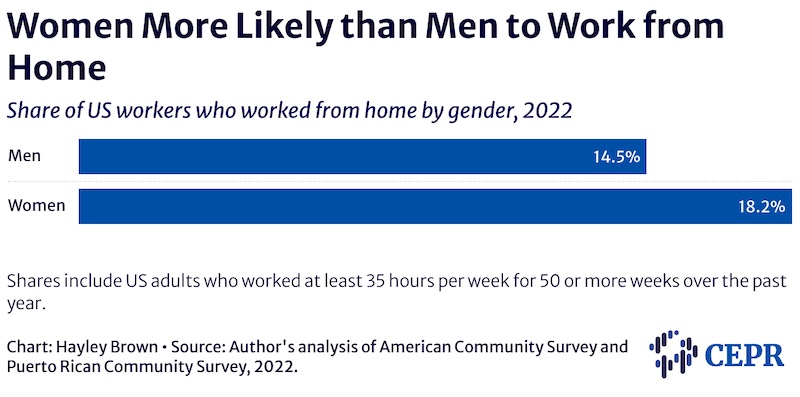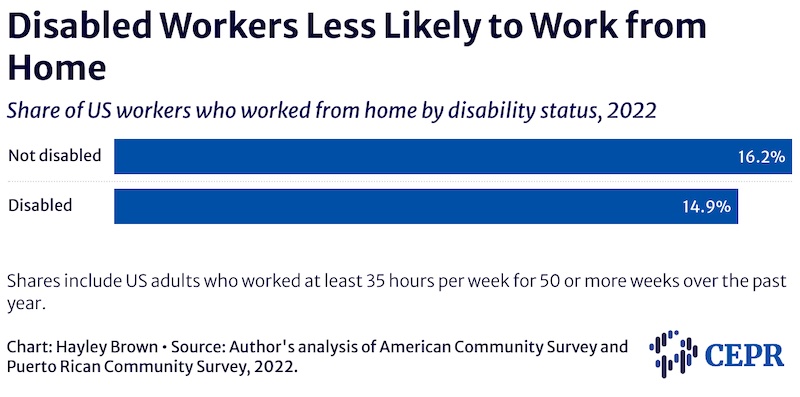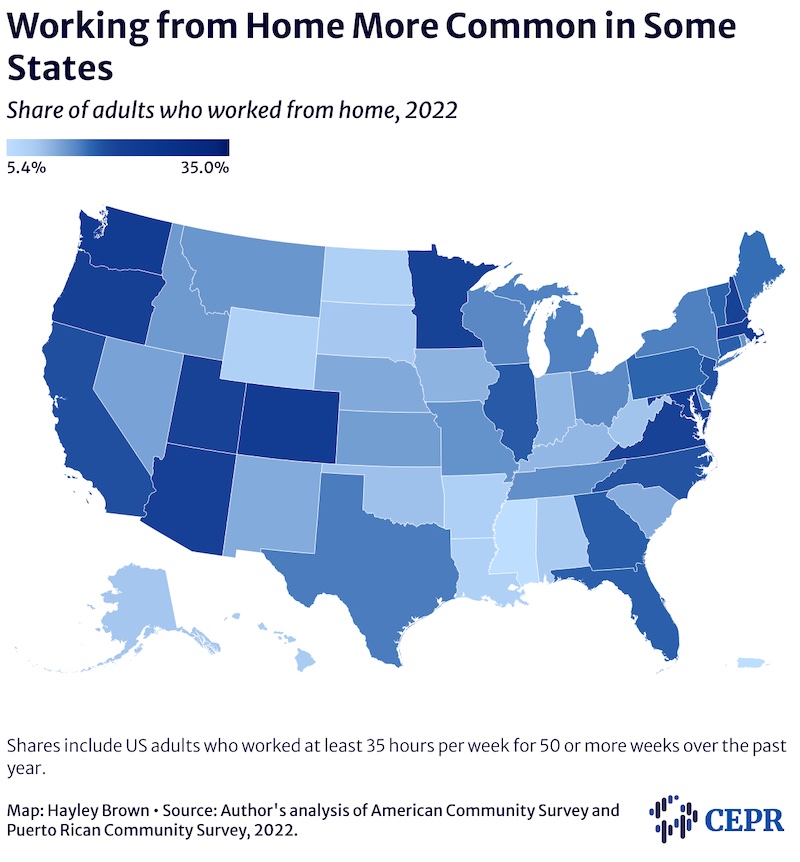The Demographics And Geography Of Remote Workers In The US – Analysis
By Hayley Brown
Since the COVID-19 pandemic began just over four years ago, one of the most notable transformations has been in how and where people work. The pandemic emergency forced the traditional office environment to undergo a seismic shift, as organizations across the US swiftly converted to remote work out of necessity. Where remote work was somewhat of a novelty before the pandemic, it quickly became normalized as a viable option for many jobs.
The beginning of the COVID-19 pandemic ushered in a rapid transition to remote work for many throughout the US, with over 15 million more full-time workers reporting that they worked from home in 2021 than in 2019. While the share of remote full-time workers was small but gradually ascending before the pandemic, it more than tripled between 2019 and 2021, as shown in Figure 1. The share of remote workers remained higher into 2022, the most recent year for which data from the American Community Survey data were available. Figure 1 does not include data from 2020, when survey collection was severely disrupted, resulting in data integrity issues.
The relative success of remote work during the early days of the pandemic led many to predict that flexible work arrangements would remain in demand for the foreseeable future. Of course, an individual’s ability to work from home is necessarily limited by the nature of their job. For example, hospitality, manufacturing, and health service jobs may require physical presence. One study from early in the pandemic found that 37 percent of jobs in the US could feasibly be done from home. Today, it is unclear whether those who commute to jobs that could be done remotely are commuting because of their preferences or because their employer requires it. What is clear is that individuals in higher-paying, white-collar professions tend to have greater access to remote work options, while lower-paid, blue-collar workers are more likely to be required to commute to a work site.
Working from home has many benefits. It eliminates commuting costs, can enable greater work-life balance, and reduces the risk of contracting illnesses like COVID-19, which remains a substantial threat amid the ongoing pandemic. Yet occupational segregation, among other things, means that only some workers can avail themselves of these benefits, potentially exacerbating socioeconomic inequalities.
The Demographics of Remote Workers
Those who work from home are diverse, but some demographics are overrepresented. In 2022, those with more formal education were more likely to work from home than those with less formal education (Figure 2). Nearly a quarter of those with at least a Bachelor’s degree reported working from home, compared to just 8 percent of workers with only a high school diploma. This is unsurprising, as jobs that can be done from home often require higher levels of formal education.
There was also considerable variation in reports of remote work by race and ethnicity (Figure 3). White and Asian workers were more likely than their Black or Hispanic peers to say that they worked from home in 2022. While this may similarly reflect occupational segregation, a study from 2020 found that differences in income and education did not fully explain racial disparities in access to remote work. Once accounting for other factors, the researchers found that white workers were more likely to be permitted to work from home than workers of color. Those dynamics may partially explain the persistent racial and ethnic gaps in remote work in 2022.
There was a slight gender disparity in remote work, with women more likely to report working from home than men in 2022 (Figure 4). Unfortunately, women were also more likely than men to see a pay penalty for working remotely.
Remote work has been touted as an essential accommodation for many workers with disabilities. Before the pandemic, workers without disabilities enjoyed greater access to flexible work arrangements than their disabled counterparts. The pandemic shift to remote work has been hailed as an example of universal design that particularly helps disabled workers. Some have cited the increase in the availability of remote work as a reason for the recent uptick in disabled employment. However, full-time workers with disabilities were less likely than those without disabilities to say that they worked from home in 2022 (Figure 5). This likely reflects both occupational segregation and the heterogeneity of the disabled workforce.
The Geography of Working From Home
Geography also plays a role in the prevalence of remote work. Remote work ballooned more in some states than others, and not solely in states with relatively high concentrations of remote workers prior to the pandemic. However, states that saw larger increases in remote work generally ended up with higher overall shares of remote workers. Figure 6 shows the share of full-time adult workers who worked remotely in 2022 in each of the US states, the District of Columbia, and Puerto Rico. The District of Columbia was home to the largest share of remote workers, with 35 percent of full-time employees reporting that they work from home. Mississippi hosted the smallest share of remote workers in 2022 at 5.4 percent. These states also experienced the largest and smallest relative increases, respectively, in the share of remote workers between 2019 and 2022.
The pandemic-era surge in remote work brought about significant changes in the workplace, offering many workers increased autonomy and accessibility in their jobs. This shift continued to redefine the nature of work throughout 2022 and is expected to have lasting impacts in the years to come. However, while remote work presents a newfound benefit for many, it’s evident that not all workers are positioned to take advantage of it. As remote work continues to evolve, it is important to account for demographic, occupational, and geographic disparities in who can access this key benefit. Addressing what underlies these differences will help make remote work opportunities more equitable and inclusive.
- This article was published by CEPR


